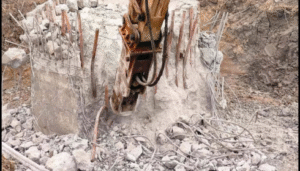When it comes to analyzing trends and making informed decisions, especially in the realm of market predictions, the Great Bazar Chart stands out as an essential tool for many. Whether you’re a novice trying to understand the world of bazar charts or someone with experience, knowing how to interpret this tool is vital for making the best decisions. This guide aims to offer a comprehensive overview of the Great Bazar Chart, from its origins to its modern applications.
What is a Bazar Chart?
Before diving into the specifics of the great bazar chart, it’s important to understand what a bazar chart is. Bazar charts are tools that help users track and interpret numbers, results, or trends in different types of markets. Although primarily linked with games of chance, these charts can also be applied in a variety of other industries where tracking results and making predictions based on historical data is necessary.
The Evolution of Bazar Charts
Historically, bazar charts were used to record results in informal markets, particularly in India. Over time, the system of recording these results became more formalized, giving rise to structured charts such as the Great Bazar Chart. These charts evolved from simple recordings of random results to more complex tools that could predict patterns and trends.
The evolution of the Great Bazar Chart is a testament to its growing significance in various sectors. By refining the way results are displayed and interpreted, this chart provides a more comprehensive understanding of market movements and trends.
Structure of the Great Bazar Chart
The Great Bazar Chart is not merely a random collection of numbers. It has a well-structured format that is designed to make it easier to analyze results. Typically, these charts include rows and columns where numbers or results are placed according to certain rules. By looking at the layout of these numbers, users can begin to see patterns that might not be obvious at first glance.
The chart usually displays results over a period of time, which allows users to track changes and predict future outcomes. Each entry is carefully recorded, creating a historical database that can be used for analysis.
How to Read the Great Bazar Chart
One of the most important aspects of using a Great Bazar Chart is knowing how to read it. While at first glance, the numbers and rows may seem random, they actually follow specific patterns. Here’s a step-by-step approach to reading these charts effectively:
- Identify the Time Frame: The first thing you need to do is understand the time frame that the chart covers. Some charts are updated daily, while others might reflect weekly or monthly results. Knowing the time frame will help you understand the trends you are observing.
- Look for Patterns: Once you’ve identified the time frame, start looking for recurring patterns in the numbers. Patterns can include repeating numbers, sequences, or other recognizable trends.
- Compare Past and Present Results: Use the historical data provided in the chart to compare past results with more recent ones. This will give you an idea of any shifts or changes in trends.
- Analyze the Numbers: The numbers themselves are the key to understanding the chart. By carefully studying how the numbers interact and progress, you can start making educated guesses about future results.
Applications of the Great Bazar Chart
While many people use the Great Bazar Chart for entertainment and games of chance, it can also be applied in a variety of other fields. Here are some of the more practical uses:
- Market Predictions: In some markets, such as commodities or stock trading, bazar charts can be used to predict trends and make informed decisions. By analyzing past results, investors can make educated guesses about future market movements.
- Business Analysis: Businesses that rely on seasonal sales or trends can use bazar charts to track their performance over time. This data can be used to make informed decisions about inventory, marketing strategies, and other key business functions.
- Forecasting: Another practical application of the Great Bazar Chart is in forecasting. Whether it’s weather predictions, sales forecasts, or economic trends, the ability to track and interpret data over time can be invaluable.
Benefits of Using the Great Bazar Chart
There are several key benefits to using the Great Bazar Chart, especially when it comes to making informed decisions:
- Accurate Data Representation: One of the primary benefits is the accuracy with which data is represented. By tracking results in a structured manner, the chart ensures that nothing is missed, and all data is recorded systematically.
- Identifying Trends: Another benefit is the ability to identify trends quickly. Whether the chart is used for personal or business reasons, the ability to see patterns can help in making well-informed decisions.
- Improved Predictions: For anyone involved in markets or fields where forecasting is important, the Great Bazar Chart can significantly improve prediction accuracy. By looking at historical data, users can make educated guesses about future events.
Challenges in Using Bazar Charts
Despite the many advantages, there are also challenges to using a Matka 420. For beginners, understanding how to read and interpret the data can be daunting. The numbers may seem random at first, and recognizing patterns takes practice.
Additionally, while the chart can be useful for making predictions, it’s important to remember that it is not infallible. No chart can guarantee accurate predictions 100% of the time. Users must exercise caution and combine chart data with other forms of analysis for the best results.
Conclusion
The Great Bazar Chart is a powerful tool for those who know how to use it effectively. Whether you’re involved in market predictions, business analysis, or simply trying to track trends for personal use, understanding this chart can help you make more informed decisions. However, as with any predictive tool, it’s important to use the chart wisely and in conjunction with other data sources to ensure the most accurate predictions.
By taking the time to understand its structure and applications, users can harness the full potential of the Great Bazar Chart for a variety of purposes.
















+ There are no comments
Add yours